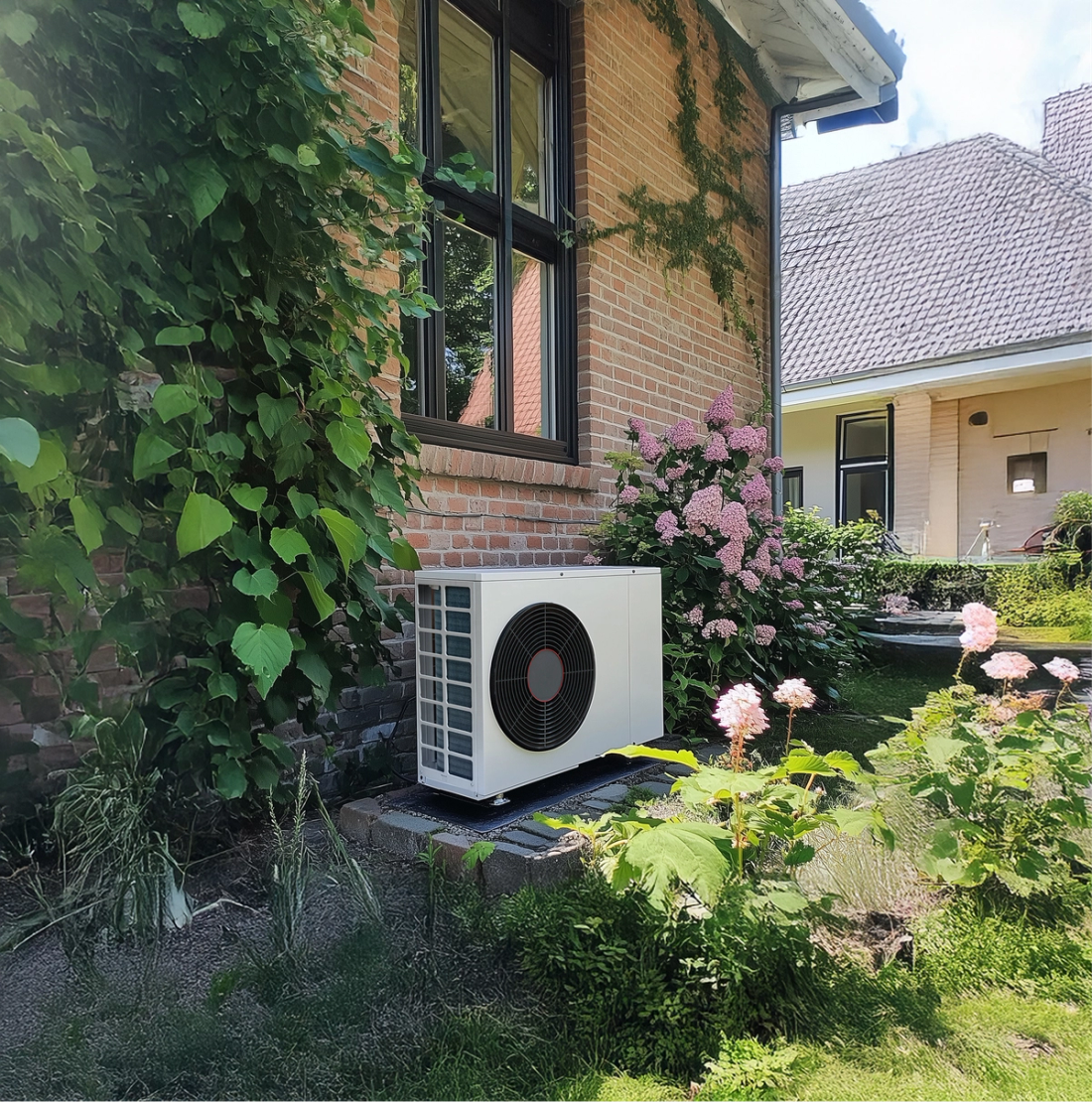Introduction
The heating sector in the UK is undergoing a major regulatory transformation in 2025. As governments push hard to decarbonize buildings, the regulations governing low-carbon heating systems — especially heat pumps — are evolving rapidly. Whether you are a homeowner considering a switch to a heat pump, an installer or engineer working on low-carbon technologies, or a project manager overseeing building portfolios, you need to understand what the “heat pump regulations 2025” encompass. This article will dissect the key regulatory changes, compliance implications, common challenges and practical steps to align your business or home-upgrade programme. We’ll also discuss how digital platforms like Reonic can support workflow, asset-registers and performance-tracking in this changing landscape.
Regulatory Context: Why 2025 is a Pivotal Year
In the UK, 2025 is emerging as a watershed year for regulation in building-services and low-carbon heating. The key drivers:
- The forthcoming Future Homes Standard (FHS) will require new homes (from 2025) to produce much lower carbon emissions and use low-carbon heating systems such as heat pumps.
- The introduction of the Clean Heat Market Mechanism Regulations 2025 – effective 1 April 2025 – which places obligations on manufacturers/suppliers to acquire credits for low-carbon heating installations.
- Revised permitted-development rights (PDR) for heat pump installations in England, effective from 29 May 2025, making it easier to install heat pumps without full planning permission.
- Updated certification standards for installers and systems (e.g., MCS 020 a for air-source heat pumps).
The cumulative effect of these changes is that heat-pump installations will become more mainstream, less bureaucratic in many cases, but also more regulated in terms of standards, eligibility, documentation and performance. For professionals in the renewable-energy sector, understanding these changes is not optional — it’s a requirement.
Key Regulatory Changes in 2025 for Heat Pumps
Here are the most significant regulatory changes affecting heat-pump installations in 2025, with what they mean in practice.
1. Permitted Development Right (PDR) Changes – England
From 29 May 2025, changes to PDR for heat pumps include:
- Removal of the 1 metre boundary requirement (from property boundary) for air-source-heat-pump (ASHP) installations.
- Increase in the maximum unit size for a dwelling from 0.6 m³ to 1.5 m³ under PDR.
- Detached houses allowed to install up to two heat pumps under PDR.
- Inclusion of air-to-air systems (which provide cooling) under the same PDR rules.
Impact: Fewer planning hurdles, shorter lead-times, broader home types now eligible. For installers this means more business opportunities and fewer delays; for homeowners simpler process.
2. Certification and Installation Standards
- The standard MCS 020 has been updated: in England, from 29 May 2025 ASHP installations must comply with the new MCS 020 a standard. Read more about MCS compliance here
- The standard MIS 3005‑I: 2025 (MCS installation standard for heat pumps) has been published and guides safe and compliant installs.
For professionals: ensures installations are up to higher standard; ensures you’re audit-ready; ensures performance and compliance match regulatory expectations.
3. New Build & Future Homes Standard
- Under the Future Homes Standard, new homes built from 2025 in England will need to use low-carbon heating (e.g., heat pumps) and achieve 75-80% lower carbon emissions compared to current regs.
- Although a full ban on gas boilers was previously reported, there has been some push-back; nonetheless low-carbon heating is increasingly mandatory in new builds.
For project-managers: design decisions for new builds must integrate heat pumps (or equivalent) early; ensure systems are sized, specified and compliant.
4. Clean Heat Market Mechanism (CHMM)
- The Clean Heat Market Mechanism Regulations 2025 require obligated parties (e.g., boiler/needing equipment suppliers) to acquire credits for low-carbon heating appliance installations relative to fossil-fuel boiler sales.
- Certification scheme alignment: MCS is proposed to be the sole certification scheme under CHMM.
For installers and manufacturers: opportunity to leverage low-carbon heating credits; must ensure installations meet certified standards; data and documentation become more important.
Common Challenges & Pitfalls for Heat-Pump Projects in 2025
While the 2025 regulatory reforms bring opportunity, they also introduce new risks. Here are typical challenges:
- Installer capacity and competence: As more systems roll out, the shortage of skilled installers remains. Poor sizing, incorrect flow temperatures (heat pumps favor 55 °C or below flow), and inadequate commissioning remain common issues.
- Retrofit complexity: In older homes, integrating a heat pump may require radiators to be oversized or pipework upgraded. The regulatory focus on low-carbon heating means retrofits must be better planned.
- Planning & site constraints: Although PDR improvements reduce planning burdens, exceptions remain (listed buildings, conservation areas, flats). Always check local authority.
- Documentation & certification: Using the correct standard (e.g., MCS 020 a) and maintaining correct records is essential — failure may invalidate grants, warranties or compliance.
- Performance & monitoring: For asset efficiency and client satisfaction, it’s not enough to install a heat pump — you must ensure it meets performance targets. This is especially true in portfolio-management or B2B settings.
- Regulatory ambiguity or change: Some policies (e.g., ban on gas boilers) have been revised or delayed. Stay updated. For example, a previously reported 2035 gas-boiler ban was scrapped.
Practical Solutions & Implementation Steps
Here’s a structured approach for installers, engineers, homeowners or project-managers to align with the 2025 heat-pump regulations:
Step 1 – Early Regulatory Review
Audit your current workflow, specification templates and proposals to ensure they reflect the 2025 requirements: check whether your proposals use heat-pump specification aligned with MCS 020 a, ensure you know the new PDR allowances for your client’s property type and location, and ensure you are ready for CHMM credit-tracking if relevant.
Step 2 – Site Survey & Specification for Low-Carbon Heating
On new builds: ensure design includes low-carbon heating (heat pump or equivalent) in line with FHS. On existing buildings: assess suitability for heat pump – verify building fabric, radiator size, flow temperature, outdoor unit positioning (especially now boundary rule is relaxed). Use digital tools (like Reonic) to register assets, schedule service intervals, monitor performance and tie in maintenance and monitoring with the regulatory framework.
Step 3 – Compliance & Installation Standards
Ensure your installation team is certified (e.g., MCS accredited), follows MIS 3005-I: 2025 and uses correct standard (MCS 020 a for ASHP in England). Prepare and maintain full documentation: design records, noise-assessment records (especially where PDR applied), commissioning certificates, client hand-over pack. Use Reonic or similar platforms to log and track the installation, performance and service schedule.
Step 4 – Asset Register & Monitoring
Once installed, link the heat-pump system into a digital asset-management platform: track key metrics (COP, energy use, flow/return temps, system efficiency, fault alerts). Schedule maintenance tasks (via SFG20 or other standards) and ensure regulatory obligations are monitored (e.g., any CHMM reporting). For project-managers with multiple units, this becomes critical for portfolio-level oversight.
Step 5 – Upkeep & Performance Assurance
Ensure that flow temperatures, control strategy, and system commissioning are optimised for low-carbon heating. For example, heat pumps perform best at lower flow temps and good building insulation. Maintain records and service logs that show the system is delivering expected CO₂ reductions. This not only supports regulatory compliance but builds client confidence and enables proactive maintenance.
Case Study: Retro-Fit Project under 2025 Regulations
A town-centre operator overseeing 30 converted homes engaged an installer to replace gas boilers with ASHPs. They took the following approach:
- Permitted development check confirmed new PDR rules allowed installation without full planning (unit within 1m boundary, size within 1.5 m³).
- Installer followed MCS 020 a standard and MIS 3005-I: 2025 procedures.
- Asset register created in Reonic platform; each unit’s heat-pump was tagged, performance-monitored and scheduled for annual checks.
- After 12 months, average space-heating energy consumption dropped by 22 % vs prior gas operation. The project manager used dashboard data to demonstrate regulatory compliance, performance outcome and service-contract value.
This shows how navigating the 2025 regulations effectively unlocks higher performance, compliance and value-added service for stakeholders.
Conclusion
The regulatory environment for heat pumps in the UK in 2025 is both transformative and demanding. For installers, engineers, homeowners and project-managers, the “heat pump regulations 2025” encompass changes in permitted development rights, certification standards, new-build mandates, monitoring obligations and broader structural schemes like the Clean Heat Market Mechanism. Embracing these changes proactively gives you a competitive edge: fewer delays, higher compliance, stronger performance and greater value to clients. Tools such as Reonic play a key role in linking asset-management, performance-tracking and regulatory compliance into a unified workflow. As the push toward net-zero accelerates, aligning your business or home-upgrade pathway with the 2025 regulatory changes is imperative—not optional.
FAQ
Q1: What are the major planning-permission changes for heat pumps in England in 2025?
From 29 May 2025, the PDR for heat pumps allow units up to 1.5 m³ (up from 0.6 m³), allow installation within 1 metre of the property boundary, permit up to two units on detached houses and include air-to-air systems with cooling under these rights.
Q2: Do heat pumps have to be compulsory in new builds from 2025?
Under the Future Homes Standard, new homes built from 2025 are required to use low-carbon heating systems such as heat pumps or equivalent technologies to achieve significantly lower carbon-emissions levels.
Q3: What certification and installation standards apply in 2025?
In England, air-source heat pump installations must comply with the MCS 020 a standard from 29 May 2025. Also the MIS 3005-I: 2025 installation standard guides safe and compliant installs.
Q4: What is the Clean Heat Market Mechanism and how does it affect installers?
The Clean Heat Market Mechanism Regulations 2025 require manufacturers/suppliers to acquire credits for low-carbon heating installations relative to fossil-fuel boiler sales. Installations must be certified via recognised schemes (e.g., MCS) and accurate documentation is essential.
Q5: For an existing home, what should I consider before installing a heat pump under the 2025 rules?
You should assess building-fabric suitability (insulation, heat-loss), upgrade radiators or pipework if needed for lower flow temperatures, check planning constraints (if in conservation area or flat), ensure compliance with installer certification (MCS), and plan for monitoring and performance verification via platforms like Reonic for long-term value.
Q6: How do the 2025 planning rule changes help homeowners or installers practically?
By eliminating the previous boundary-distance rule and expanding unit size and number allowances under PDR, more homes (including terraced, semi-detached and those with limited outdoor space) become viable for heat-pump installations without full planning applications. This reduces cost, delay and complexity.
Q7: Are gas boilers banned from 2025?
While earlier reports suggested a ban on gas-boiler sales by 2035, the government has reportedly back-tracked. However, new-build standards from 2025 do mean new homes must use low-carbon heating, effectively limiting new gas-boiler installs in that context.
Q8: What role can digital platforms like Reonic play in complying with the 2025 regulations?
Platforms like Reonic can streamline asset-registration, link installations to certification records, schedule planned maintenance, track performance metrics (COP, energy consumption), align with certification standards (MCS) and regulatory schemes (CHMM), and deliver audit-ready documentation for homeowners, installers or portfolio managers.







